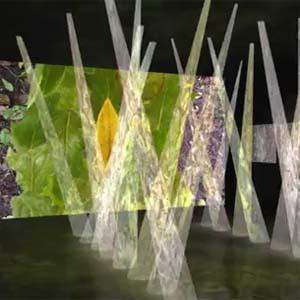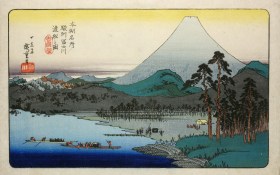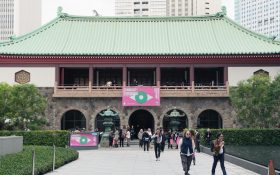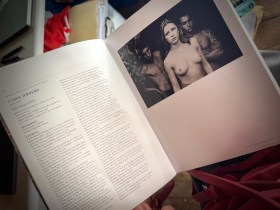John Jones is one of the pioneers of 3D visualization and has had his textile work acquired by the V&A.
John himself is an expert in the technical and visual aspects of digitally developing art work into a virtual exhibition. Recently his virtual gallery also topped Saatchi in the popularity ratings on You Tube.
He combines being a craft artist with 3D visualization for luxury commercial brands and today, I, Donna Glashon interviewed the refreshingly humble John Jones about art and utilizing digital technology to enhance his work and market it to larger audiences successfully.
What is your background, when did you start to use digital arts in general?
By seeing the arrival of the first desk top graphic computers which where affordable in the late 80’s and early 90’s and I taught myself using the manual, as it was so new. It was very cutting edge at the time, the start of all of it.
What attracted you to this type of work?
I was fascinated by wire frame, by the sculptural element and how it opened up whole new worlds and possibilities…
…and what is a wire frame, please clarify?
A wire frame is when you construct 3D models of anything-organic shapes or buildings, or whatever. You actually have to construct a wire frame model which you then apply textures to.
How have you seen digital arts, technology utilized commercially in your profession, how are people making a living out of it?
Well, I am a 3D visualiser, so initially I found that once I was good at it, I was then drawn into interior design companies, architectural practices who needed 3D models of their concept …ideas. As I was one of the first doing it, I was drawn into that area.
There is also work in the film industry, games industry, and advertising – there is a whole area of work where you take their idea and create an image out of it, which is tangible and which can be presented to their clients, you are the communicator.
How do you see the industry growing?
There is still a lot going on in the film industry and work is improving in other industries and growing because digital technology is apart of everything nowadays.
What is your favorite form of digital technology?
I was interested in 3D sculpturing, rendering etc, but now I am interested in video edits and animation, because I started with architectural fly through and that leads to motion graphics – it’s all interlinked. As you develop skills you know (and learn) all sorts of different packages that you work with.
…and what is motion graphics?
You use a programme called after effects, its like animating Photoshop, you can take graphics and animate it.
What type of work do you plan to produce in the future?
I am now applying all this knowledge to my own work. I also work as a commissioned artist with mainly textiles, so I created a virtual gallery using my work and put it on You Tube and it has increased the traffic to my website and more people have seen the portfolio of my work and by doing so, successfully raised the awareness of work. I have had people from California ask me to teach my skills because of this.
What are you working on now?
I am developing a patchwork leaf panel which I did for the House of Fairy Tales last summer, I then brought that back and created a video of the process and put that on You Tube – which has led to people contacting me regarding it. I have taken images from the video and then created virtual installations – which will be interactive and used as an online exhibition. So the original piece of artwork led to photography, video, animation, a virtual gallery and interactive online exhibition.
What’s your advice to newcomers who want to use digital technology to enhance their art?
Do what I did, buy the software, read the manuals and see how you can apply it, as it empowers you in the most amazing way. Look at the Hollywood movies – you can do it once you figure out how to use the software.
Career Highs?
It has been with my textile work, having a coat I made acquired by the V&A collection, with my own page – which I think is cool.
Whose work do you enjoy?
I am inspired by everything around me, its not a particular artist or movement, it can be something that a child has done. I did some panels at the House of Fairy Tales and one of the children (an autistic child) did an amazing piece because she saw color differently.
What clients have you worked with?
I have worked with various hotel groups such as Hilton who then purchased my patchwork for some of their foyers, Intercontinental Hotel group and Radisson whom I just did their refurbishment for in Paris. There have also been clients such as luxury car companies, BT, exhibition companies for mobile phones – I have done it for ten years so there have been so many – have a look on my website which links to all my work.
How have you marketed your endeavors?
Saatchi did a virtual fly through of their new gallery in Chelsea and I put my virtual gallery on at the same time and we where level pegging it, but recently I have slowly over taken them. It just shows people will be just as interested in your work as big international names. Type virtual gallery into You Tube and I’m at the top of the list – sometimes I’m knocked off by Monet – but I’m there. It empowers you and now I’m selling my work and I have added limited editions of it.
And how much do these cost?
My commissions can start from simple textile panel for a couple of hundred pounds, but the complex work which takes months to make can be tens of thousands of pounds….but I do not like to exclude people and want to engage on all levels.
To find out more about John Jones and to purchase his work check out these links:
www.jjgallery.com
www.youtube.com/user/jjsep06
Virtual gallery – www.youtube.com/watch?v=x2gBTlUMMRo
collections.varm.ac.uk/item/o140164


_Encounters-in-Reflection_Gallery3BPhoto-by-Anpis-Wang-e1745414770771.jpg?w=280)


